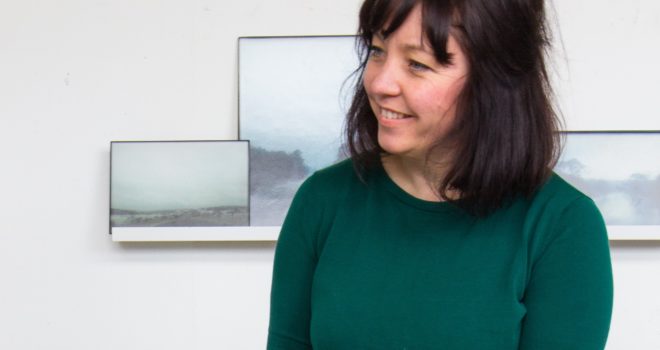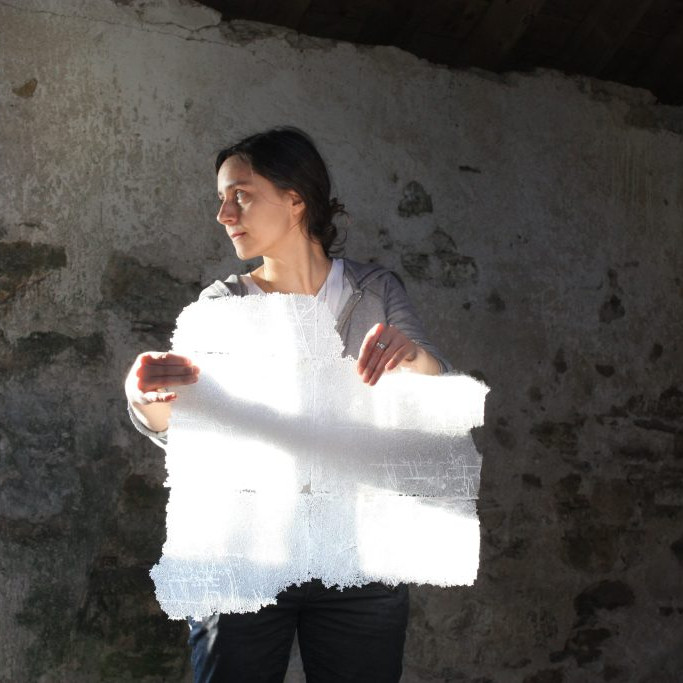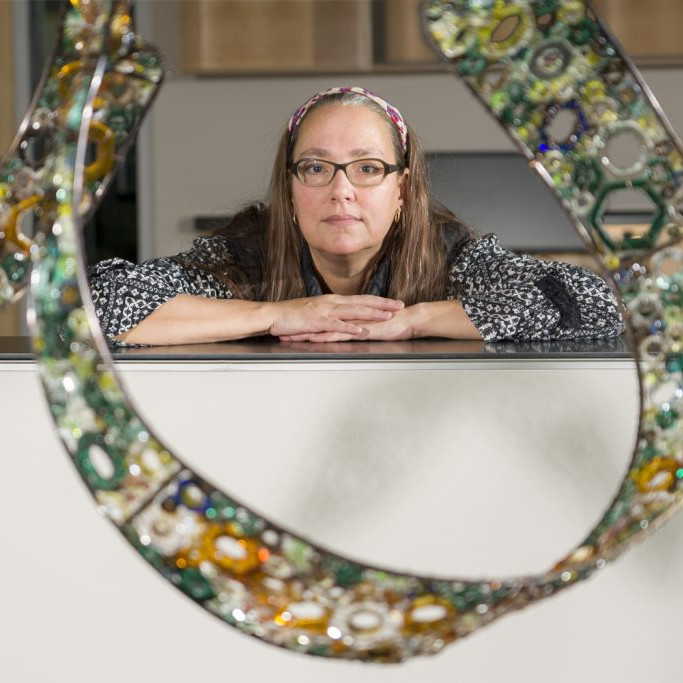Lisa Cahill Glass Artist - Canberra, Australia.
What lead you to glass making?
A love of design let me to Glassmaking. I never even considered Glass as a medium until I chanced upon it at an open day at the School of Art in Canberra. I had always imagined I would be a painter or a jewellery designer but as soon as I realised I could learn how to manipulate glass to make my artworks I was hooked.
You work with a variety of glass techniques, etching, engraving, lathe work and carving through opaque and transparent layers. Can you give us an image that shows each technique and a very brief explanation of the technique?
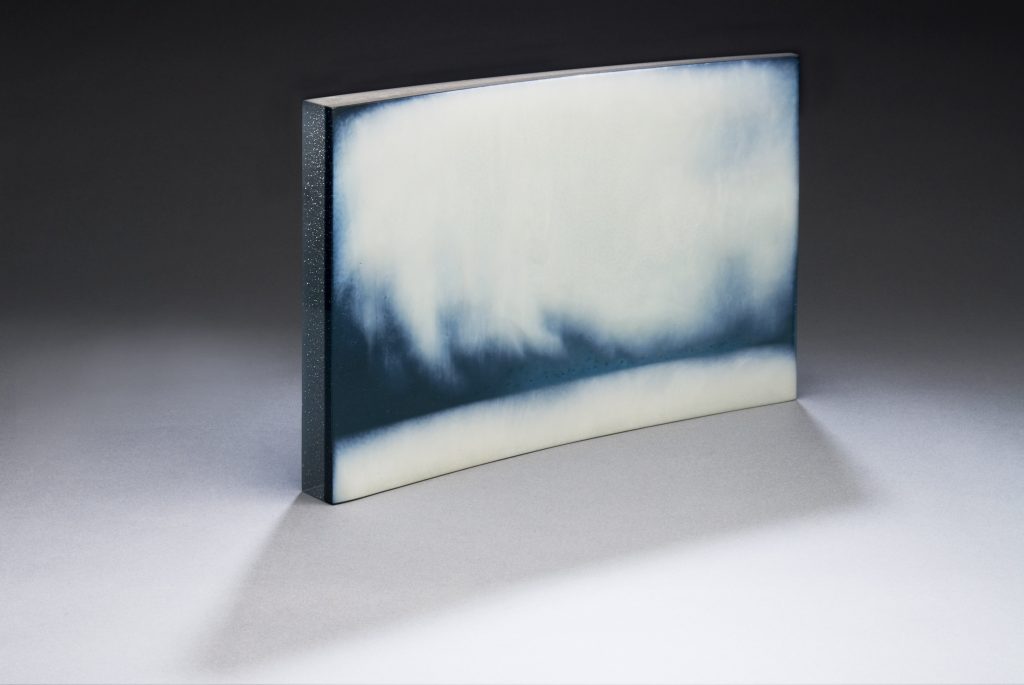
In “Virga #2” 2014 kiln formed and carved glass 28 x 48 x 6 cm Photo Greg Piper
I used the disc grinder to carve through an opaque layer of glass to reveal the transparent colour beneath.
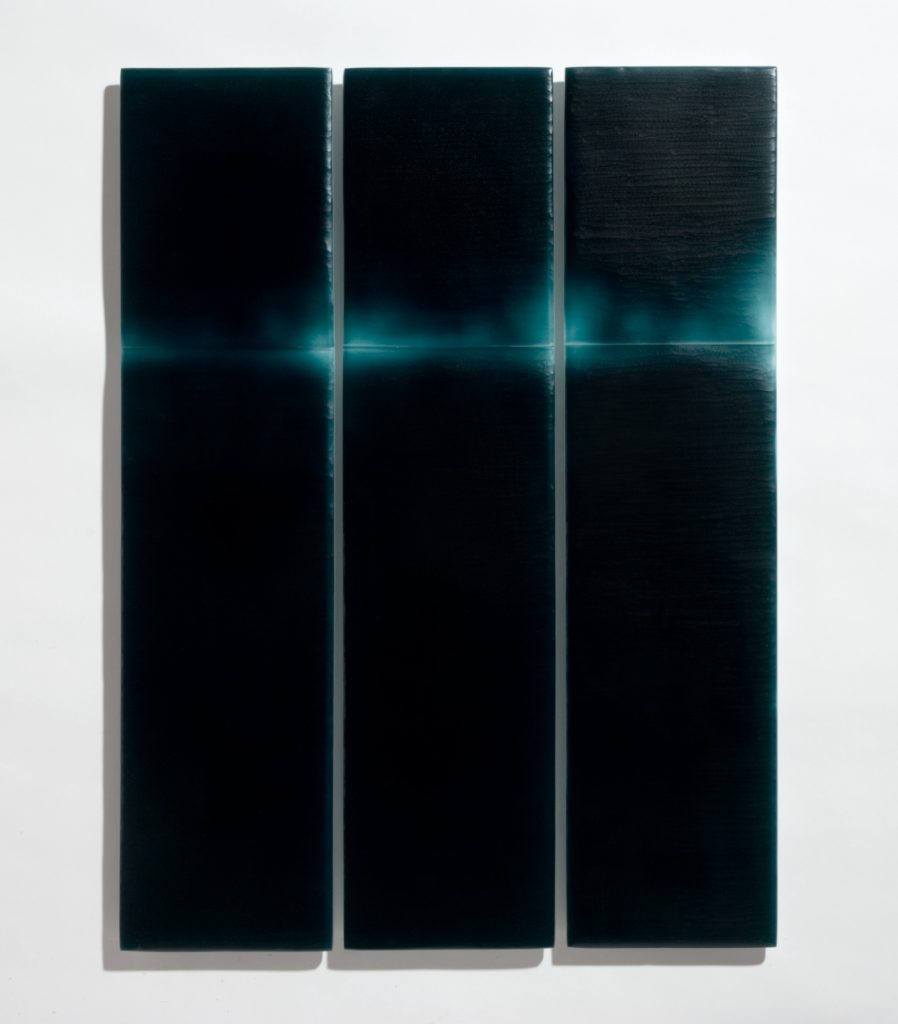
Catching Light #4, Kiln formed and wheel carved Glass, 67.5 x 50 x 1 cm, Photo Greg Piper
In I used a lathe to carve through the transparent layer.
Can you expand on your large, 36 sq. metre art work made up of 1000 postcards?
“Breathe” was a commissioned for a complete refurbishment of a corporate building at 151 Castlereagh St in the Sydney CBD. It is 6.6m high and 6.6m wide and sits out from the wall 10cm.
The architects asked me to put in a design proposal for a large artwork for an internal void. I was making very labour intensive work at the time so it took some time to come up with a design that could be produced on large scale. I wanted to be able to make the work in components that I could produce in my kilns and were easy to install. I also had to work within a budget which meant that the work I was doing at the time, layers of fused glass that was then carved back, the materials alone would have wiped out the budget. I scaled the work back and thought on a more simplified way what I could achieve the same aesthetic that would have an impact on a large scale.
I made a small maquette of a carved glass landscape and used it as the inspiration for the larger work.
Each piece has been cut, polished and then slumped in custom moulds in the kiln to take on the shape of crumpled paper. The graduating shades of amber were designed to be evocative of a fading sunset inspired by he location of the building in the Sydney CBD, known for its beautiful harbour and stunning beaches. The individual glass panels were to appear to be paper blowing in the wind. I used around 100 moulds to create 1250 panels. The whole project from conception to installation took several years but the actual making of the work took 6 months to make and 1 week to install.
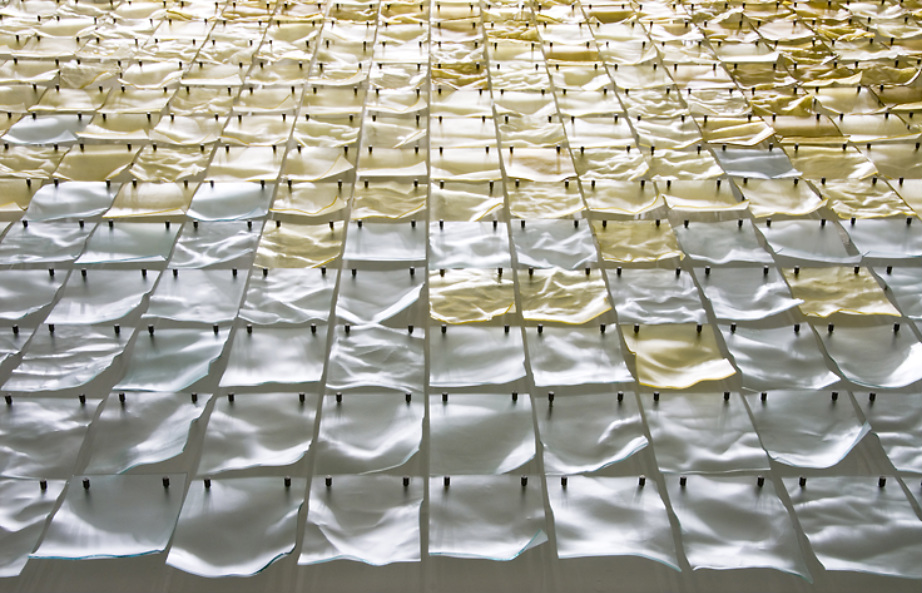
Undercurrents, 2018. Kiln formed glass, stainless steel, aluminium backing board. 1590 h x 2260 x 100mm deep. Photo Greg Piper
Discuss your work in relation to collaboration with other artists.
I can’t say I have really done a lot of collaboration as such. I have fabricated artwork for other artists and I have had artists fabricate components of my artworks. I think it’s very important to acknowledge the difference. I believe when collaborating you should both be involved in the design and concept stage. In a fabrication/gaffer situation one person with specific skills is fabricating another artists design. I have enjoyed being in both roles and am always very grateful that I have so many talented artists around me that I can draw upon to realise an artwork. I would love to do collaborations in the future.
How has the Danish landscape influenced your work?
Definitely, the cold winter landscape has had a very big impact on me. Being exposed to the Danish landscape from a young age has made me acutely aware of the contrasting Australian landscape and my connection to it. The Danish winter landscape was a big influence in my early works but more recently I have been very drawn to light and landscape and the mountainous landscape around Canberra.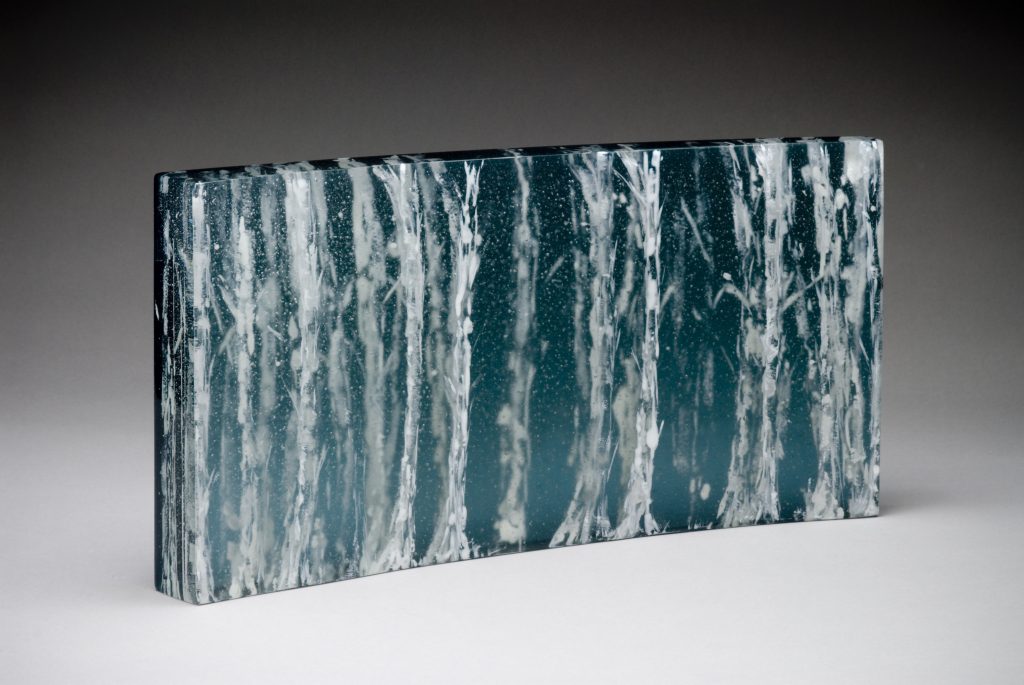
Between the woods and Frozen Lake 2011 Photo Greg Piper
How has the Australian landscape influenced your work?
‘Beneath the escarpment’ my most recent body of work was inspired by the Illawarra Escarpment which I often visit.
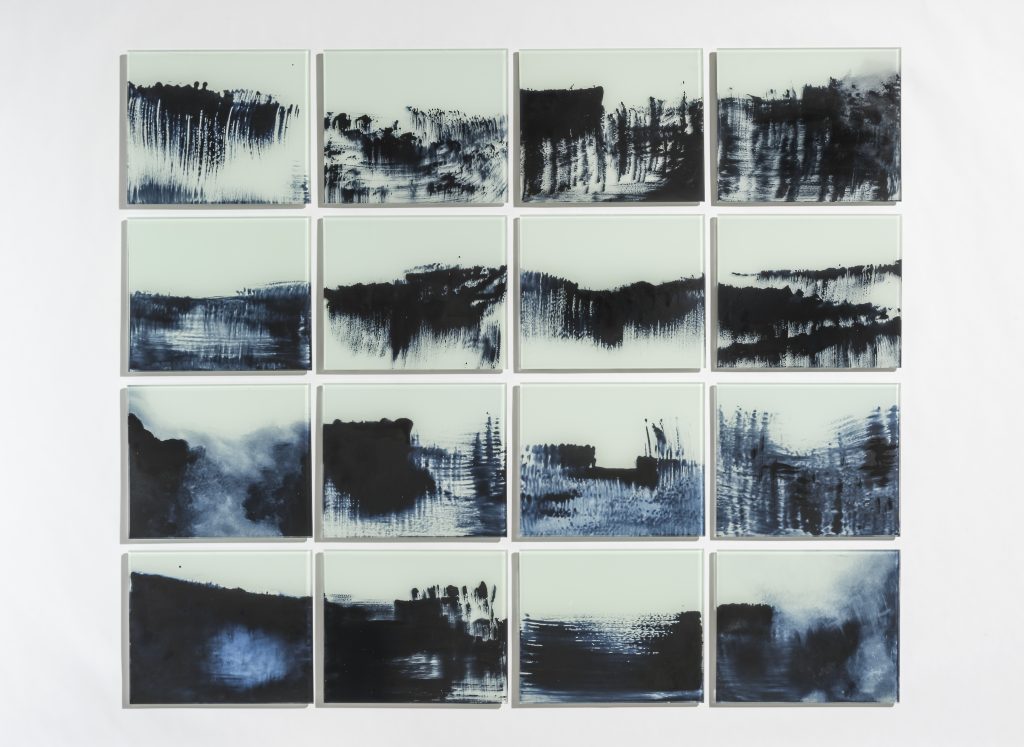
Beneath the Escarpment, 2018, kiln formed and enamelled glass – set of 16 wall panels, 1100 h x 1300 w x 10mm Photo Greg Piper
Can you explain your close association with the Canberra Glassworks?
I have been involved with the Glassworks since it opened in 2007. I have stocked the retail outlet since it opened and have been a regular hirer, exhibited regularly in the Gallery and have had several artist residencies there including a twelve month fellowship that I will begin this July. Since I moved to Canberra in 2011 I have been an active member of the Canberra Glass Community and the Glassworks is a great hub for this community. I have just returned from installing a commission I completed for the Sir John Monash Centre in Villers-Bretonneux in France that was commissioned by the Department of Veterans Affairs through the Canberra Glassworks.
Expand on your most current commission for the Sir John Monash Centre?
Where is the centre?
The centre is behind the Australian Memorial in Villers- Bretonneux, North of Paris, France. Designed to sit behind the Memorial it has been dug into the earth to resemble a war time bunker and not overshadow the existing memorial.
Why is it there?
The Centre has been built to commemorate the 100 Centenary of the end of the first world war. The original memorial was designed by Sir Edwin Lutyens in 1935 to commemorate the 300,000 Australians that served and the 46,000 that lost their lives on the Western Front in World War I.
Discuss the importance of the centre and when it will be opened?
The Sir John Monash Centre is a museum and interpretive research centre that commemorates the Australian Servicemen and woman who served on the Western Front during the First World War. It was officially opened on the 24th of April 2018 by the Australian Prime Minister Malcolm Turnbull. Through interactive media installations the centre tells the story of Australia before the war, why we went to war, what we achieved and how being involved in the War changed Australia.
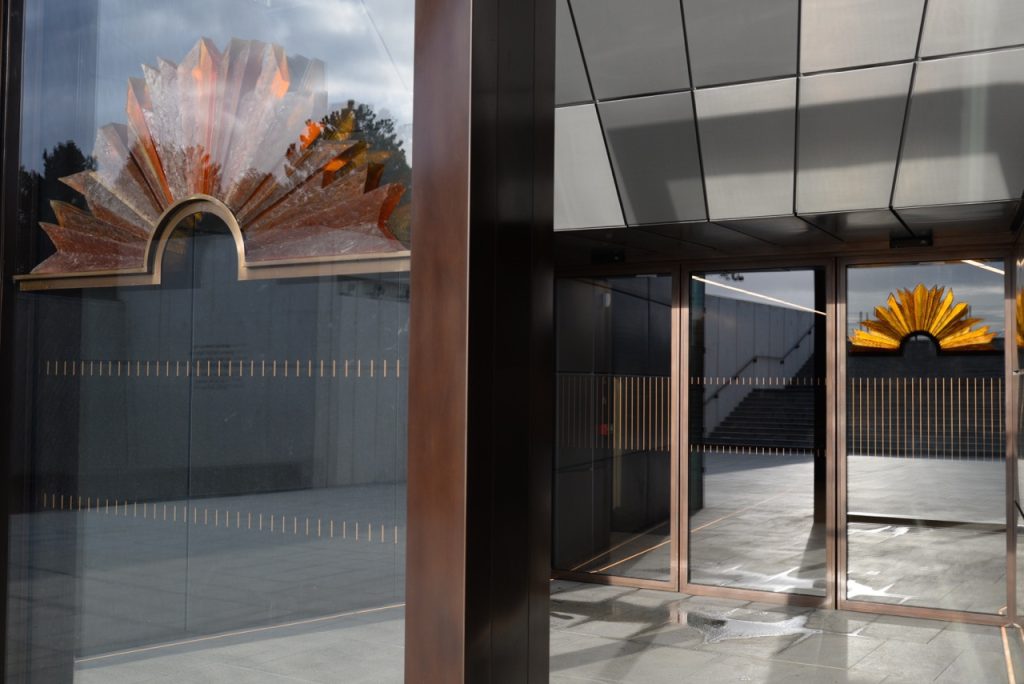
Photo Tim Wiliams, Architect
The design and scope of the centre? The building was designed by Cox Architecture with Williams, Abrahams and Lampros. Photo Tim Wiliams, Architect
Costing $100 Million dollars, The, one thousand square metre centre is designed to be “subservient” to the war memorial and has been described by one of the architects, Joe Agius, as “almost an anti-building, connected to the monument from an abstract and geometric point of view”.
Your input into the Centre?
I was commissioned to make a Glass rising Sun inspired by the ANZAC emblem. The Sculpture sits in a 4 meters high Bronze totem as you exit the building creating a beacon of light drawing you out after the harrowing and moving experience inside.
What and for who did the commission come from?
The DVA enrolled the Canberra Glassworks to put out a national call for artists to submit proposals to make a Glass Rising Sun inspired by the ANZAC emblem.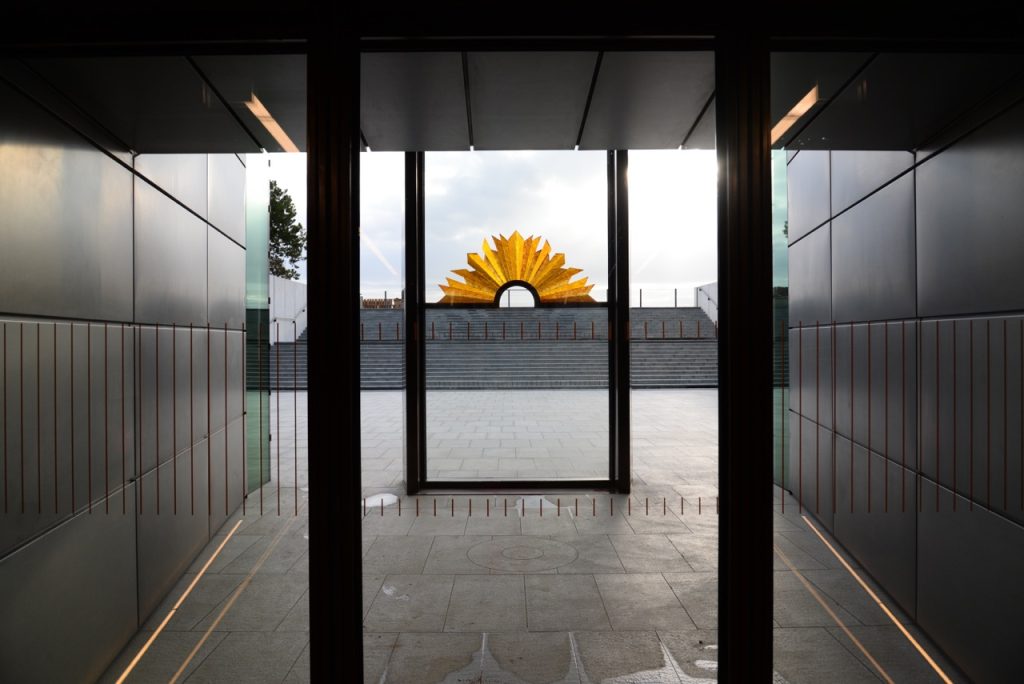
Photo Tim Wiliams, Architect
How structured was the commission?
The brief was very structured in that it had to clearly resemble the Rising sun Symbol designed by Sir Edwin Lutyens on the Tower of the Memorial. They wished for the artwork to be made of glass but the final design, what type of glass and techniques used were entirely up to the Artist.
Discuss the importance of the Rising Sun to Australians and the world?
The original Anzac badge used upturned bayonets to create a symbol that would come to represent the spirt of Anzac (the Australian and New Zealand Army Corp). Travelling to the other side of the world these diggers had a sense of camaraderie and commitment that helped them battle through rough conditions and unknown territory.
How important are Government Departments to the careers of Australian contemporary Artists?
Commissions like this one can be very important to the careers of Australian artists. It is also important for them to support our creative community as it is through art, design and architecture, music and literature that our story is told. Years into the future these artworks, plays and novels will tell the story of our time. Government departments have an obligation to enable that story whenever possible. Commissions like these also create exposure for artists to connect with a wider audience and one that you would not normally have exposure to. And they can also expand the public’s appreciation of new forms of artistic expression.
Not everyone can commission or buy big, discuss some of your small pieces?
I have always made a production line of bowls, plates and jewellery to supplement my arts practice. I enjoy making the smaller works as it is less labour intensive due to the scale but also allows me to have fun and experiment with aesthetic alone rather than getting caught up with the conceptual side so much. I also love that I can make a product that is affordable and I can connect with people through this work that might not have room in their homes or funds to purchase my exhibition works.
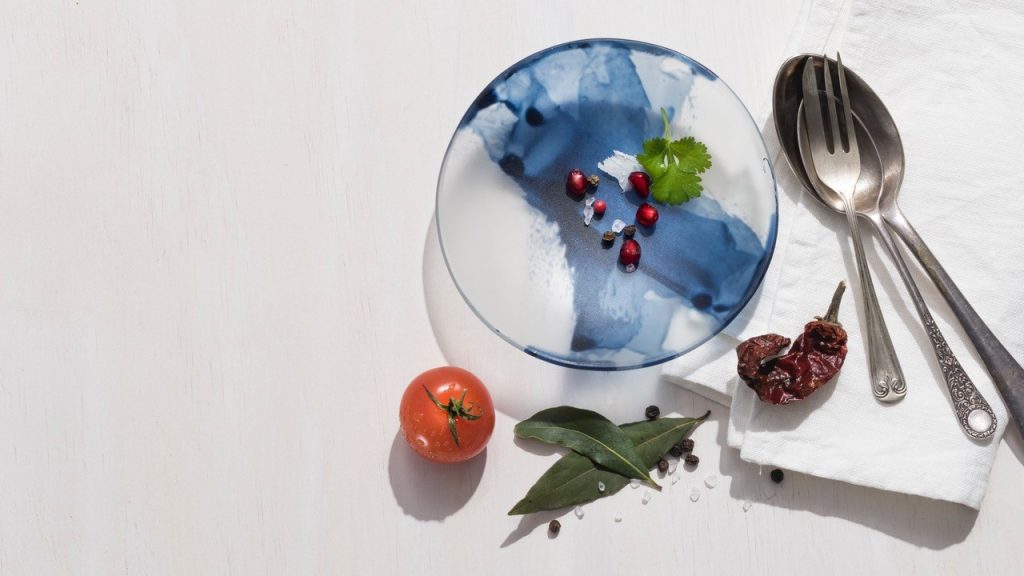
Plate and Spoons, Photo Greg Piper
What is your opinion on the importance of beautiful hand-made pieces in the home?
I have always appreciated handmade pieces in my home as they have always given me joy. Even more so when I have known the maker and know the work that has gone into that piece and that my purchase has helped them to keep making more beautiful work. Having handmade work in your home has a more genuine feel and creates a more personal space. Buying local handmade work enables you to contribute to sustaining your creative community.
Contact details:
Lisa Cahill
lisa@lisacahill.com
Lisa Cahill, Canberra, Australia
Interview by Deborah Blakeley, May 2018
Think a colleague or friend could benefit from this interview?
Knowledge is one of the biggest assets in any business. So why not forward this on to your friends and colleagues so they too can start taking advantage of the insightful information the artist has given?
Other artists you may be interested in:


